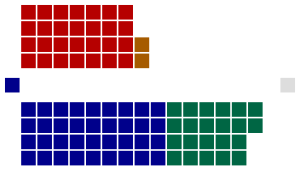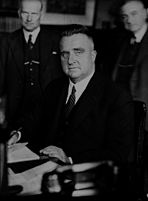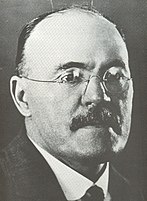New South Wales state election, 1938
|
|
||||||||||||||||||||||||||||||||||
|---|---|---|---|---|---|---|---|---|---|---|---|---|---|---|---|---|---|---|---|---|---|---|---|---|---|---|---|---|---|---|---|---|---|---|
|
||||||||||||||||||||||||||||||||||
|
All 90 seats in the New South Wales Legislative Assembly 46 Assembly seats were needed for a majority |
||||||||||||||||||||||||||||||||||
|
||||||||||||||||||||||||||||||||||

Legislative Assembly after the election
|
||||||||||||||||||||||||||||||||||
|
||||||||||||||||||||||||||||||||||
Bertram Stevens
UAP/Country coalition
Bertram Stevens
UAP/Country coalition
The 1938 New South Wales state election was held on 26 March 1938. This election was for all of the 90 seats in the 32nd New South Wales Legislative Assembly and was conducted in single member constituencies with compulsory preferential voting.
The result of the election was:
The UAP/Country Party coalition of Bertram Stevens/Michael Bruxner had a majority of 28 (down 2). Stevens continued as Premier until 5 August 1939 when he was deposed by his party and replaced by Alexander Mair.
Labor's continued poor showing in this election was seen as evidence of Jack Lang's inability to appeal to the middle ground of the electorate. As a result, moves to dispose Lang intensified. The Industrial Labor Party led by Lang rival Bob Heffron was re-absorbed into the ALP on 26 August 1939 and Lang was replaced as party leader by William McKell on 5 September 1939.
During this parliament the ALP and Industrial Labor each won 2 by-elections from the UAP. This reduced the Government's majority to 20 when the parliament was dissolved.
New South Wales state election, 26 March 1938
Legislative Assembly
<< 1935 — 1941 >>
...
Wikipedia


